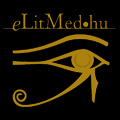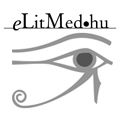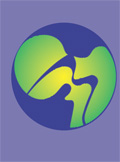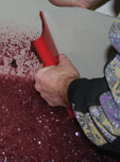The eLitMed.hu medical portal uses computer cookies for convenient operation. Detailed information can be found in the Cookie-policy.
LAM KID - 2013;3(04)
Content
[About vitamin D - let’s combine!]
[Vitamin D deficiency is a worldwide health problem. On the basis of the recommendations of the latest vitamin D consensus conference, we would like to draw attention to the significance of prevention as well as the recognition and treatment of vitamin D deficiency. We mention that some antiporotics designated “prefix” or “combi” are available that may ensure adequate calcium and vitamin D intake, thus improving patient’s adherence.]
[Once again on adherence - Is it just fashionable or indeed a timely issue?]
[Nonadherence to pharmacological treat-ment in osteoporosis is a well-recognised problem not only in Hungary but all over the world. As in other chronic diseases, adherence to osteoporosis treatment is poor, which results in serious problems affecting patients as well as health care resources. Low adherence rates consistent-ly result in increased rates of fractures. Some approaches aimed to improve com-plience and persistence, such as extension of dosing intervals, might improve patients’ adherence to therapy. International clinical studies have demonstrated that the number of fractures cannot be reduced without suf-ficient adherence. Improving patient edu-cation, enhancing interactions between health care providers and patients, taking into account patients’ preferences and involving them in treatment decisions may all improve adherence.]
[Our predecessors were right - Closing remarks on the solubility of urate crystals in microscopic specimens]
[The authors studied the solubility of urate crystals in alcohol, in an 8% aqueous solution of formaldehyde and in acetone, respectively. The urate crystals were least soluble in alcohol. In comparison, the amount of urate crystals decreased in the aqueous solution of formaldehyde, which confirmed the suggestion of our predecessors that tissues suspected to contain urate crystals should be fixed in alcohol. Urate crystals dissolved in greatest amounts in acetone. Acetone is widely used by histological laboratories for dehydration of tissue blocks before embedding them in paraffin, which, in case of fixation in aqueous formaldehyde, contributes to the dissolution of urate crystals. In our earlier studies, we found that dissolution of urate crystals from haematoxylineosin stained sections is caused by the staining of nuclei in haematoxylin, therefore urate crystals are preferably demonstrated in unstained tissue sections.]
[Femoral neck fractures treated with DHLS screws - early results]
[In Hungary, the treatment approach for medial femoral neck fractures depends on the type of fracture and the overall condition of the patient. An obvious goal is to minimise the most common complications of the applied method, namely avascular necrosis of the head and redisplacement, while maintaining a low-risk and minimally invasive technique. Following the surgical method most commonly used in our country, we combined the double cannullated screws technique with the compressing HeadLess Screw System. This way we succeeded to achieve intraoperative compression, which provides intensified stability while retaining the principles of minimally invasive techniques.]
[MicroRNAs as a new family of hormones]
[MicroRNA molecules regulate the translation of mRNAs to proteins. In a study published by Maria A. Cortez and her colleagues in Nature in 2011, the authors suggest that miRNAs, known as biomarkers and translation regulators, could be considered as nucleic acid hormones. In this paper we introduce the characteristics of microRNAs that support their function as hormones.]
[Quality of life of patients with osteoporosis in Hungary]
[AIM - The aim of our study was to estimate the loss of quality of life due to osteoporotic fractures. We performed a cross-sectional study including 840 patients in 21 centers that specialise in the care of patients with osteoporosis and in acute care of fractures. METHODS - Patients were selected randomly and stratified for the location of and time elapsed since the fracture. Quality of life (QoL) was assessed by the Qualeffo-41 and the EuroQol-5D questionnaires. RESULTS - Patients with morphometric fractures of more than one vertebra had the lowest median EQ-5D index value (0.59). Symptomatic vertebral, hip and arm fractures also considerably decreased QoL. Patients with morphometric fractures of more than one vertebra had the lowest total Qualeffo-41 score. When controlled for age and gender, patients with hip fracture or morphometric vertebral fracture had at least 0.2 less mean utility values than had osteoporotic patients without history of fracture. Patients with more than a oneyear history of hip fracture had QoL scores as low as had patients with an acute fracture. In case of wrist and arm fractures, the acute loss of QoL somewhat decreased with time. CONCLUSION - In conclusion, osteoporotic fractures, especially hip and vertebral fractures result in a significant loss of patients’ quality of life. Our results show that physicians need to pay a close attention to morphometric vertebral fractures, which contribute to a great loss of human capital.]
1.
Clinical Neuroscience
[Headache registry in Szeged: Experiences regarding to migraine patients]2.
Clinical Neuroscience
[The new target population of stroke awareness campaign: Kindergarten students ]3.
Clinical Neuroscience
Is there any difference in mortality rates of atrial fibrillation detected before or after ischemic stroke?4.
Clinical Neuroscience
Factors influencing the level of stigma in Parkinson’s disease in western Turkey5.
Clinical Neuroscience
[The effects of demographic and clinical factors on the severity of poststroke aphasia]1.
2.
Clinical Oncology
[Pancreatic cancer: ESMO Clinical Practice Guideline for diagnosis, treatment and follow-up]3.
Clinical Oncology
[Pharmacovigilance landscape – Lessons from the past and opportunities for future]4.
5.











